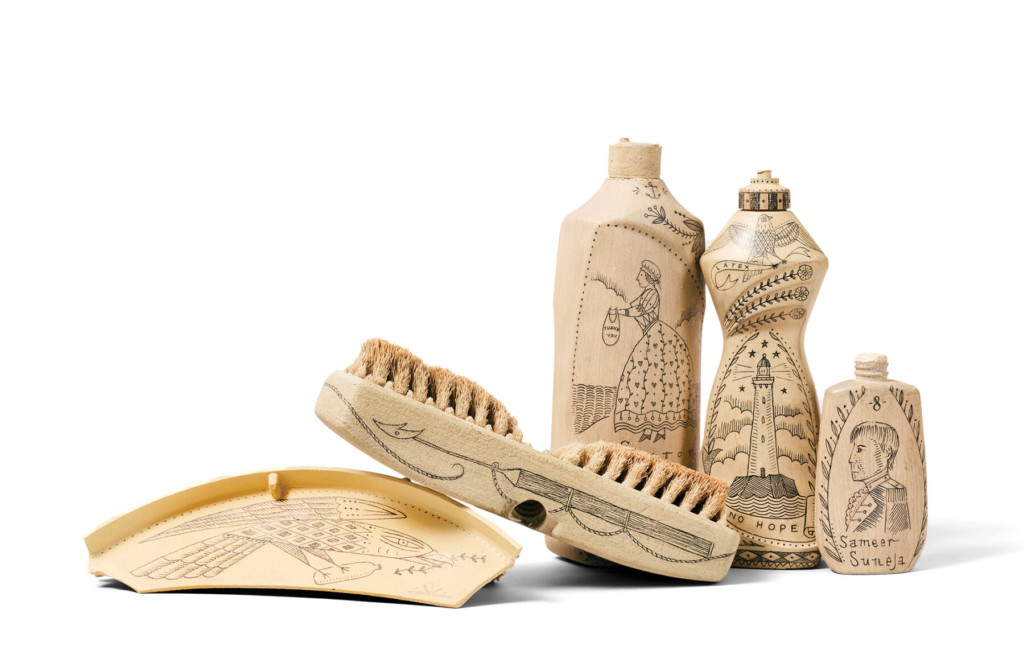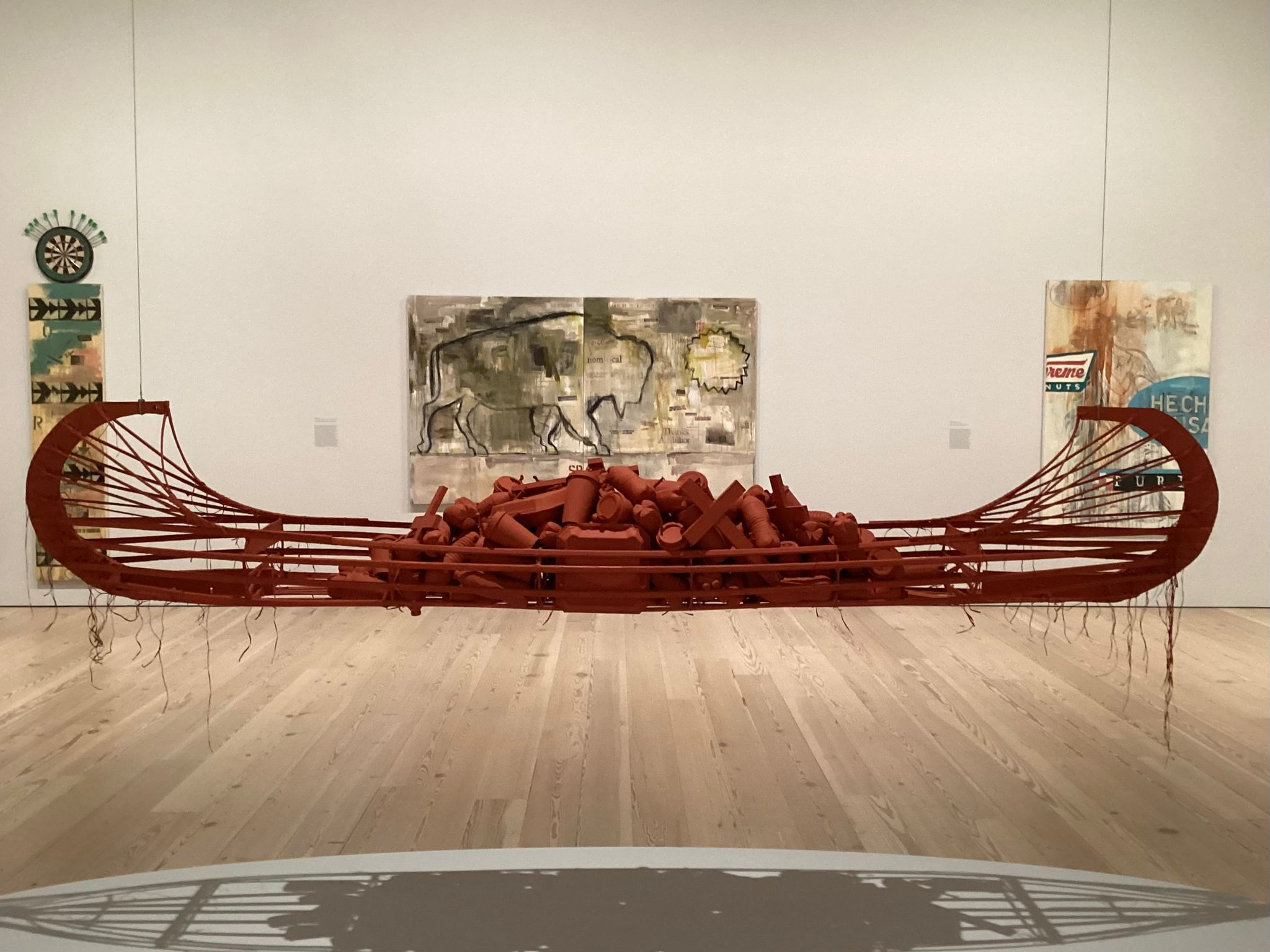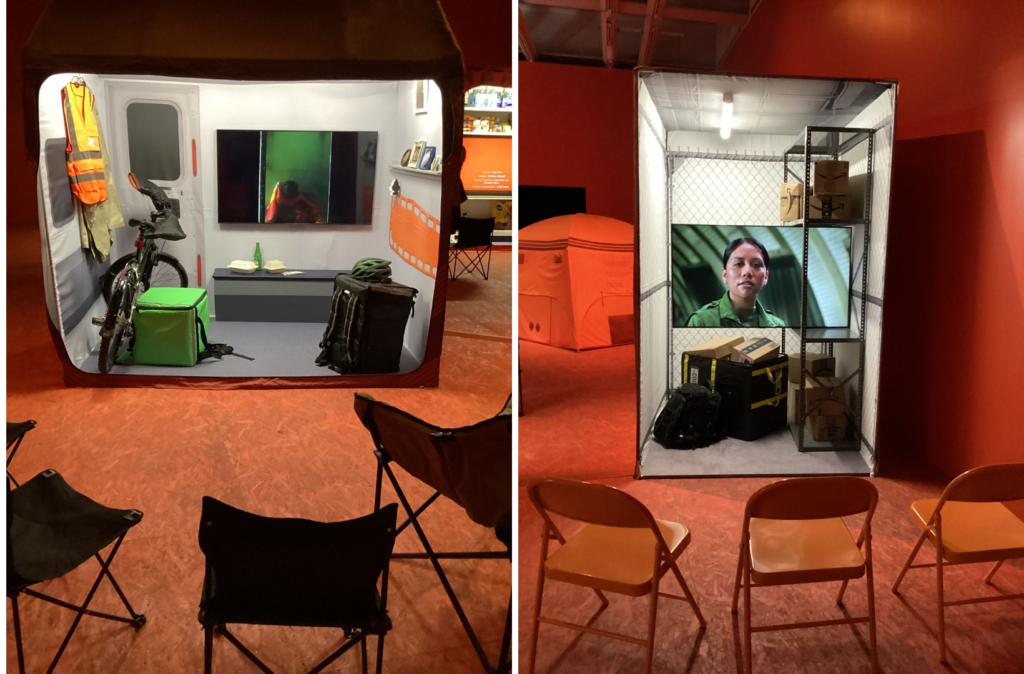New York City is arguably becoming a leading hub for art related to the environment. A plethora of new initiatives were announced during this year’s Earth Day, on April 22. These actions contribute to a growing trend that sees an increasing number of museums focusing on sustainable development and organizing exhibitions by environmentally aware artists, galleries endeavoring to reduce their environmental impact and more and more artists committing to these issues.
Gallery Climate Coalition (GCC) inaugurated, on the 21th of April, the opening of its New York branch* at the Solomon R. Guggenheim Museum. Its founding committee* includes Laura Lupton, co-founder of Galleries Commit (the first voluntary initiative by employees of New York galleries concerned by the environmental impact of their activity), Whitney McGuire, head of sustainability at Guggenheim Museum as well as gallery founders such as Chiara Repetto (Kaufmann Repetto) or Matthew Wood (Mendes Wood). That said, if galleries have decided to accelerate actions aimed at reducing the carbon impact of their exhibitions, not all artists equally address the impact of the materials that they use. This is illustrated in Chelsea, the traditional center of the New York art scene, where Fred Eversley’s exhibition of monumental polyurethane resin sculptures “Cylindrical Lenses” at David Kordansky can be juxtaposed with large-scale sculptures by Abraham Cruzvillegas at Kurimanzutto Gallery that are made entirely from recycled materials.
On April 22, a “New York Climate Exchange” initiative was announced by New York Mayor Eric Adams. It consists of a 700-million-dollar project aimed at accelerating the transformation of New York’s Governors Island into a “Living laboratory”, entirely dedicated to developing solutions for climate change. The project is supported by the Simons Foundation and Bloomberg Philanthropies. Under the leadership of Meredith Johnson, the island’s already dynamic artistic programming is also turning towards climate issues, in particular local issues and insularity in general.
For its part, the MoMA, under the leadership of Carson Chan, has decided to celebrate Earth Day over an entire month. “Earth Month” includes a rich discussion program, but also new artwork descriptions that offer an environmental perspective on certain pieces. Having recently declared itself a “Circular Museum”, the MoMA already has a department dedicated to sustainable development. Finally, a new 160-hectare farm project in Pennsylvania has been initiated to supply the employee restaurant, as well as to welcome artists in residence.
The cradle of environmental art is reinventing itself
New York’s rich art scene is comprised of artists working on both local and global environmental issues and brings together both experienced artist-activists and a new generation of artists. The ecological art scene first developed in the 1960s, as the French-Canadian art historian Bénédicte Ramade demonstrated in her last book**. New York is known as the birthplace of “ecological art”, whose development was driven by leading female artists such as Mierle Laderman Ukeles and Agnes Denes. According to Heather Davis, lecturer at The New School University, Joan Jonas and Robert Smithson were also important contributors to this fecund movement. It continued into the 70s and 80s with artists such as Betty Beaumont and Cecilia Vicuña, and then into the late 90s with a duo of artist friends particularly interested in the natural sciences: Mark Dion and Alexis Rockman. Today, New York artists (predominantly women), such as Terike Haapoja, Mary Mattingly, Duke Riley, and Dylan Gauthier, perpetuate the ecological art tradition with a strong social and participatory dimension that work concretely towards a more ecological and egalitarian society. For example, artist Michael Wang has chosen to live in the suburbs of New York in order to have the space to grow plants that no longer grow wild in the city, and which he reintroduces through his art project “Extinct in New York”.
Many artists act together through groups or associations, such as Art to Acres, founded in 2017 by Haley Mellin, which links together art and the preservation of the forest. Another example is the Artists Commit collective, co-founded by artist Davide Balula, which provides artists with the resources and tools necessary to develop a less carbon-intensive practice. Alex Nathanson, an artist, but also an engineer and designer, notably provides artists with concrete solutions for powering their artworks with solar energy. Nathanson, who wrote A History of Solar Power Art & Design and launched the “Solar Protocol”, an experimental network of solar-powered servers in different parts of the world, is undoubtedly one of the city’s top change-makers.
Is art leading science?
Whilst MoMA’s work is impressive – the museum boasts about a sustainability committee and dedicated programming through the specifically created Ambasz Institute – other major institutions are also taking the lead with bold programming and commitments.
A symbol of openness and responsibility, the Brooklyn Museum, led by Anne Pasternak, is today the cornerstone of a shift in the art history narrative, but also of a new relationship between residents and museums. Duke Riley’s exhibition centered around plastic pollution, “DEATH TO THE LIVING, Long Live Trash”, takes up an entire floor of the building and brings much-needed awareness to the disastrous environmental consequences of the current American way of life. The museum is a step ahead in guaranteeing itself a diverse set of visitors that reflect the diversity of the world that the museum intends to represent. Additionally, there are numerous labels providing insight into the social and environmental dimensions of the works on display and an entry policy based on voluntary donation. As a climate visionary, the Brooklyn Museum was not afraid to exhibit Alexis Rockman’s 8-meter-long canvas “Manifest Destiny”, an apocalyptic vision of Brooklyn submerged by rising waters.
The smaller Swiss Institute also serves as a model. This art center has chosen not to dissociate content and process, entrusting both programming and CSR actions to its director Stefanie Hessler, who is remarkably apt at both. The institute’s strategic plan, “Our Evolving Ecologies”, integrates actions focusing on the building, the production of exhibitions, and programming. Furthermore, from May 10, 2023 until May 10, 2025, the “Spora” project provides a physical manifesto of the new plan. This experimental, 2-year exhibition has taken over the center’s non-gallery spaces – such as the roof – that are usually off-limits to visitors. Artists Mary Mattingly, Jenna Sutela, Vivian Suter, Helen Mirra, and Tʼuyʼtʼtanat-Cease Wyss mix urban and natural materials to create an artistic proposal that raises awareness for the current climate emergency, as well as questions the role of cultural institutions in society.

Duke Riley, “DEATH TO THE LIVING, Long Live Trash”, Brooklyn Museum, 2023 © Duke Riley. (Photo: Robert Bredvad.)
From a programming point of view, the Whitney Museum has been headline news since April 19 and the inauguration of a double exhibition: “Memory Map”, the first New York retrospective of Native American artist Jaune Quick-to-See Smith. This exhibition denounces the social oppression and environmental destruction suffered by her people and an equally ambitious solo exhibition by Josh Kline, “Project for a New American Century”, which includes a large part dedicated to global warming.
However, the Big Apple’s Natural history museums, often pioneers in nourishing the relationship between art and science (and climate), do not seem to be interested. On May 4, the opening of the monumental new wing of the famous American Museum of Natural History , designed by architect Jeanne Gang , promised a new narrative on the interdependence of species and human responsibility with its exhibition “Invisible Worlds”. Alas, once you have paid the $30 entrance fee, the aesthetic experience depicting an idealized and simplistic climate narrative looks more like an advertisement for greenwashing. In the realm of natural sciences, it’s better to look to the Wildlife Conservation Society’s New York Aquarium, and its associate director Noah Chesnin for inspiration.As part of its initiative to scale up to a year-round presence, the museum opened a pop-up space in Soho that closed on April 30. In terms of scientific popularisation on climate change, the Climate Museum, founded by Miranda Massie, uses the arts to develop environmental awareness and encourage citizens to take action.
Canadian and French influences
The exchanges between New York and Montreal seem fruitful. The “ Synthetic Collective ” initiative that brings together the cities of Montreal, Ontario and New York to address the question of plastic pollution in the Great Lakes region demonstrates the results that can be obtained when women artists and researchers work hand in hand. Participants include artists Kelly Jazvac and Tegan Moore from Montreal and Heather Davis from the New School in New York. Bénédicte Ramade, the leading specialist in American ecological art also lives in Montreal, where she teaches at UQAM. Good practices are increasing, from Montreal’s “Space for Life” museum district and the changing arts program at the Biosphere via McCord Stewart Museum, where since 2021 a permanent exhibition, “Indigenous Voices of Today”, has borne witness to the trauma experienced by the First Peoples with objects and the stories of members of the first nations to the Montreal Museum of Fine Arts that brought together many experts together on April 26, for an event on the questions of culture and ecology.
France also intends to count as a positive influence via the Villa Albertine, inaugurated in 2021, which will soon present the environmentally oriented projects of its residents. The FIAF NY, directed by Tatyana Franck, also intends to resonate with an environmentally committed French-speaking scene with its exhibition of the emblematic artist Julian Charrière that opens next September.

Michael Wang – Artist, Stefanie Hessler – Director of the Swiss Institute, Whitney McGuire – Director of Sustainability at Guggenheim Museum, Heather Davis – Researcher and Assistant Professor at The New School, Carson Chan – Director of the Emilio Ambasz Institute, Laura Lupton – Co-founder of Gallery Climate Coalition NY and Galleries Commit © Art of Change 21
This non-exhaustive overview reveals a strong trend that is both recent and unprecedented. As Swiss Institute director Stefanie Hessler says: “When I arrived in New York a year ago, we were a long way from where we are today”. If this momentum doesn’t slow down anytime soon, it’s thanks to the support of powerful key players, such as the Helen Frankenthaler Foundation and the Teiger Foundation , proving that New York has both the creative and the financial means to move forward and lead the way as a capital of ecological and responsible art.
*founding committee GCC NYC: Ales Ortuzar, Chiara Repetto, Haley Mellin, Laura Lupton, Loring Randolph, Matthew Wood, Stefanie Hessler and Whitney McGuire
**Bénédicte Ramade recent book Vers un art anthropocène. L’Art écologique américain. 2022, Les Presses du réel (Towards an Anthropocenic Art. The Americain Ecological Art)
Alice Audouin
May 2023
Cover: Yellow “Quick-to-See” Smith, “Memory Map”, Whitney Museum, 2023 © Art of Change 21
Impact Art News, April-May 2023 #43
Subscribe to Impact Art News: here


